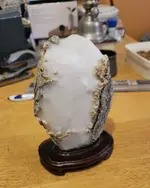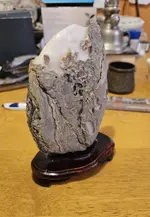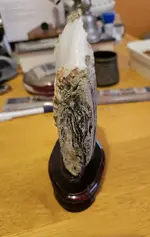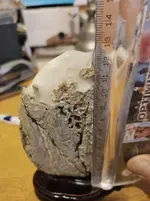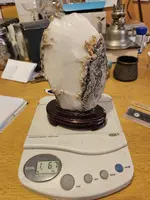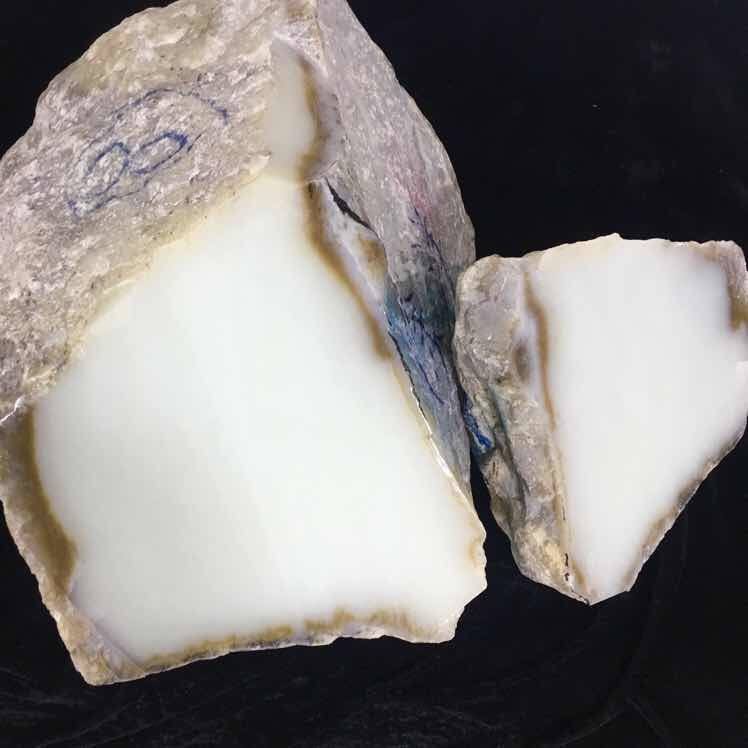I have no idea what it is geologically, but it looks to me like what is called a “suiseki” in Japan (and similar stones also come from China known as “gongshi” or “scholar’s rocks”.)
As a tradition, weird-looking natural stones are sought out for their aesthetic appeal and must have a special shape, colour and texture. A suiseki should have subtlety of color, shape, markings and surface, sometimes selected for an overall shape that resembles a landscape feature, an animal, or a sculptural form.
They’re often presented on a wooden base called a “daiza”, a waterproof ceramic tray called a “suiban”, or a bronze bowl called a “doban”. The latter two options allow the stone to be wetted in the interests of enhancing the surface appearance.
The stones are not allowed to be reshaped, but modern ones sold in Chinatown shops may not respect that rule and are sometimes purpose made as composites. One permitted exception is cutting the base to provide a flat surface so it rests stably on a daiza (but purists regard that as a devaluation of the aesthetics.)



